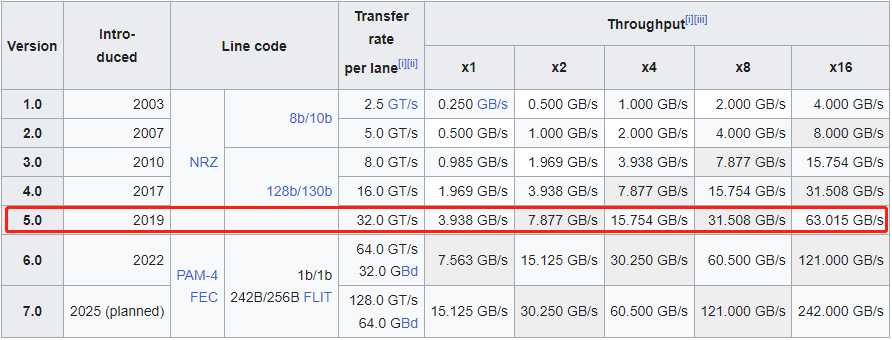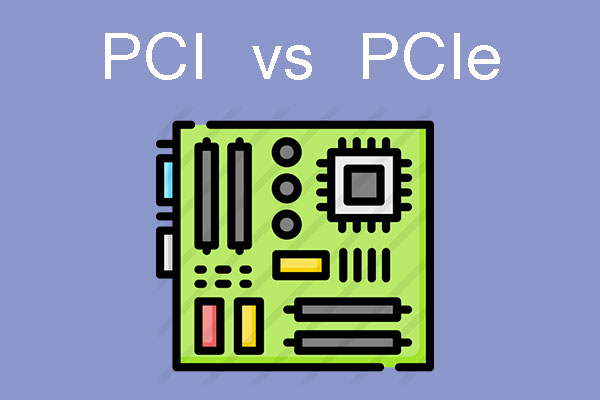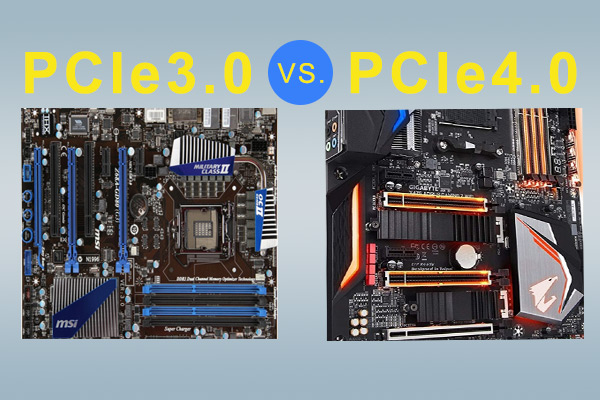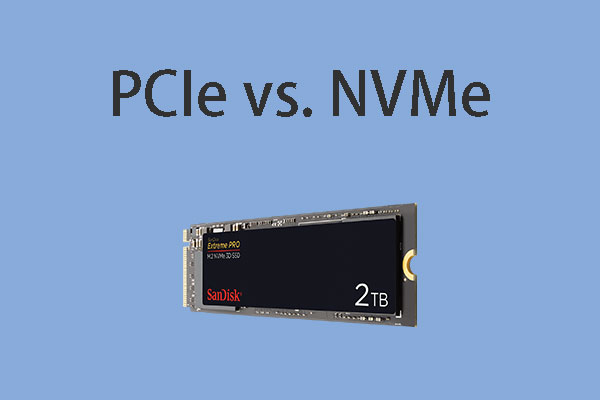What Is PCIe 5.0 SSD?
Back in 2003, PCIe (PCI Express) came into being and gradually take the place of almost all previous internal buses, including AGP and PCI. In a computer, the components that use the PCIe bus include GPU, sound card, network card, and some storage devices.
What is a PCIe 5.0 SSD? It is an SSD using PCIe 5.0 interface. At the time of writing, 6 generations of PCIe have been released and the PCIe 7.0 is scheduled to be released in 2025. Their speeds are shown in the following picture:

Are PCIe Gen 5 SSDs Available?
At present, the PCIe Gen 3.0 x 4 SSDs are still the mainstream. PCIe Gen 4 SSDs are also common and some high-end PCs may support them. However, currently, PCIe Gen 5 SSDs are very few. Of course, they will more and more in the future.
If you want to buy a PCIe 5 SSD, you can consider the following options:
- Crucial T700 Gen5 NVMe M.2 SSD (Micron 232-layer TLC; sequential read/write speeds up to 12,400/11,800 MB/s; prices start at $179.99)
- MSI SPATIUM M570 PCIe 5.0 NVMe M.2 HS SSD (sequential read/write speeds of up to 10,000/10,000 MB/s)
- GIGABYTE AORUS Gen5 10000 SSD (232-layer NAND; PCI Express Gen5 x4; DDR4 DRAM cache; sequential read/write speeds of up to 10,000/9,500 MB/s)
- Corsair MP700 PCIe 5.0 (Gen 5) x4 NVMe M.2 SSD (sequential read/write speeds of up to 10,000/10,000 MB/s)
Should You Upgrade to PCIe 5.0 SSD?
Many people have tested the speed of the PCIe 5 SSDs and they find that PCIe Gen 5 SSDs are very fast indeed. As you can see, most of these SSDs can hit a hefty 10,000MBps read and a huge 10,000MBps write speeds.
Owing to the high speed, PCIe 5 SSDs are very suitable for video editors who are looking to lay down high-resolution exports at high bitrates. In addition, latency (or responsiveness) also generally gets a nice 20 percent or more improvement over other drives.
However, is it time to upgrade to PCIe 5.0 SSDs now? The answer may be NO. The reasons are as follows:
- To fully exploit a PCIe 5.0 SSD performance, your motherboard should have a PCIe 5 slot. Otherwise, the PCIe 5.0 SSD can only run at the speed of PCIe Gen 3 or Gen 4. However, such a motherboard is usually the latest one that only supports the latest CPUs.
- Currently, the PCIe Gen 3 or Gen 4 SSDs are fast enough. In our daily use, we average persons are likely to have a hard time actually feeling the difference between a good Gen 3/4 drive and a good Gen 5 drive most of the time outside of copying an entire folder of large video files or game files.
- PCIe 5.0 drives have only been available for a few months. There will be minimal choices available to consumers. In the future, PCIe 5.0 SSDs may incorporate other powerful controllers, offering higher speeds.
- A PCIe 5.0 SSD is still very expensive now. You should consider whether it’s worth the price.
- The heat of a PCIe 5.0 SSD may be slightly high and the SSD’s optional or included cooler will be needed, instead of the cruder chunk of aluminum that came with your motherboard.
Bottom Line
It’s still not a good time to buy a PCIe 5.0 SSD. With faster options, less monstrous heatsinks, and lower prices all expected to hit the market eventually, it’s wise to wait if you can. Of course, if you want to upgrade to PCIe 5 SSD now, MiniTool Partition Wizard may help you. It can clone a hard drive, migrate OS, and recover data.
MiniTool Partition Wizard DemoClick to Download100%Clean & Safe




User Comments :